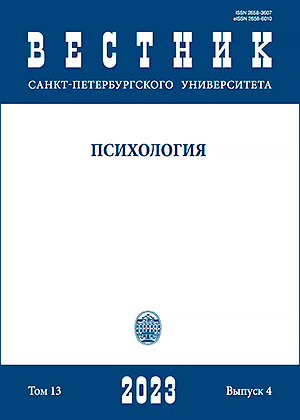Perceptions of childhood experiences and characteristics of shame in adults
DOI:
https://doi.org/10.21638/spbu16.2023.407Abstract
Shame tends to motivate social approach to restore the threatened self. If this seems impossible, however, shame activates social withdrawal. Though it is unclear why one can underestimate the possibility of repairing their threatened self, research suggests the role of adverse childhood experiences. People with such experiences report shame memories that have traumatic memory characteristics such as intrusions, avoidance and hyperarousal, which are associated with feelings of helplessness and alienation in the face of danger. Therefore, social withdrawal following shame could be associated with higher posttraumatic stress in response to shame experiences. The aim of the study was to examine the link between perceptions of childhood experiences and proneness to shame in adults. The sample included 73 participants (60 females, 13 males), M=23. Perceptions of childhood experiences were measured using the Juvenile Victimization Questionnaire. The Impact of Event Scale, the Guilt and Shame Proneness Scale and a modified procedure for assessing shame-induced behavior (de Hooge et al.) were used to measure characteristics of shame. We used comparative, factorial and multiple regression analyses. The childhood experiences of emotional bullying, physical assault, and sexual abuse related to neglect are associated with higher posttraumatic stress in response to shame experiences in adults. The participants with higher posttraumatic stress report a greater tendency to avoid social interactions when feeling shame. Childhood adversity can contribute to higher posttraumatic stress in response to shame experiences. As a result, one has lower expectations of social support and tends to avoid social interactions when feeling shame.
Keywords:
shame, adverse childhood experiences, social withdrawal, posttraumatic stress
Downloads
References
References
Downloads
Published
How to Cite
Issue
Section
License
Articles of "Vestnik of Saint Petersburg University. Psychology" are open access distributed under the terms of the License Agreement with Saint Petersburg State University, which permits to the authors unrestricted distribution and self-archiving free of charge.




